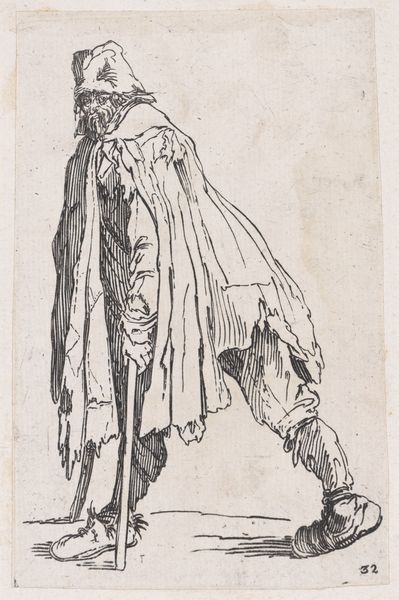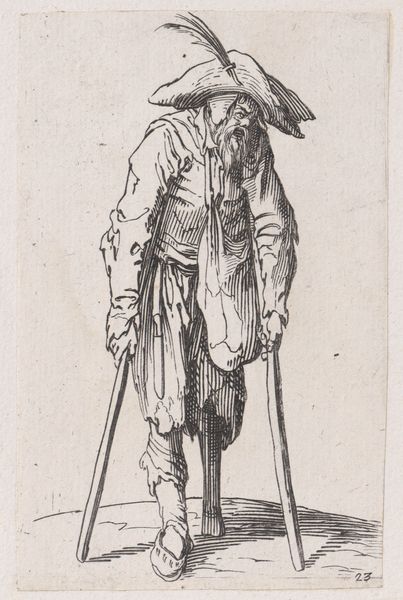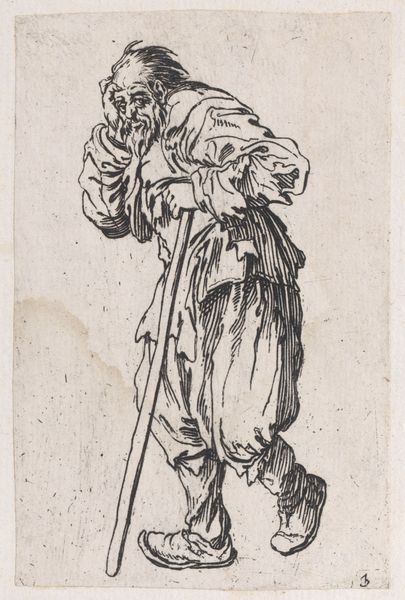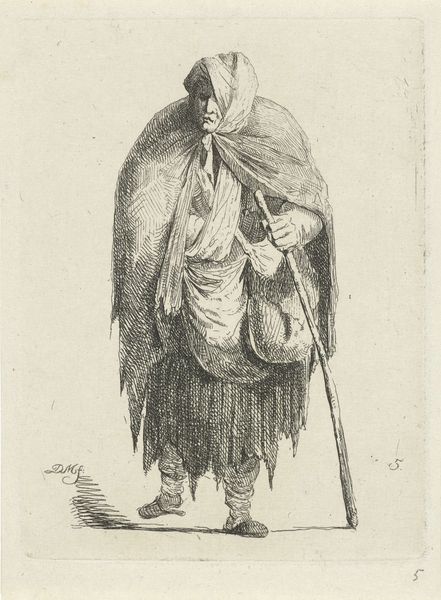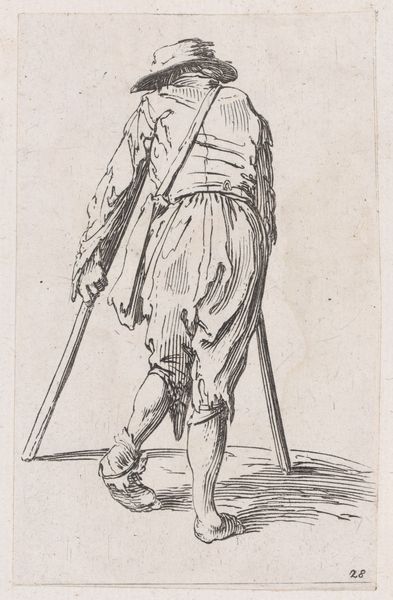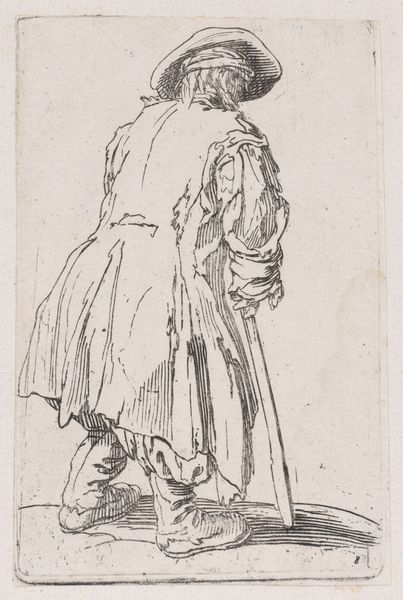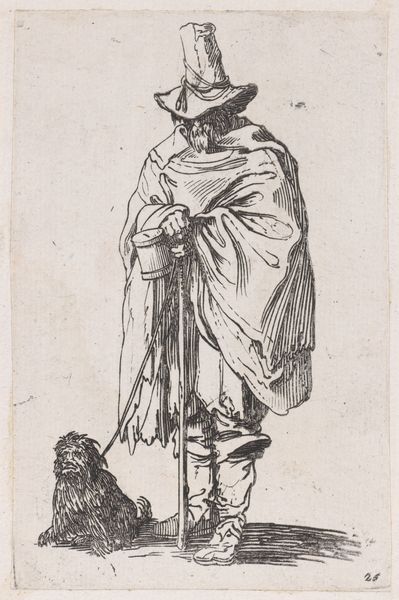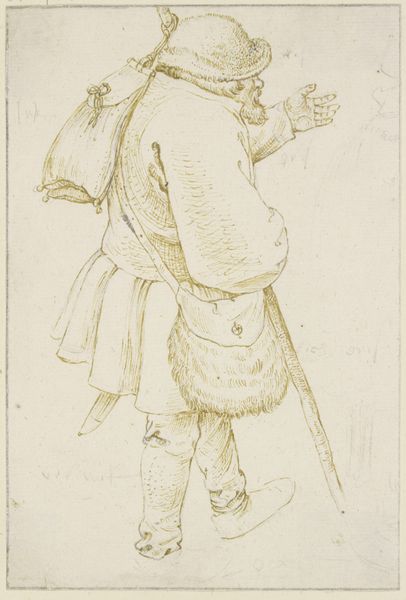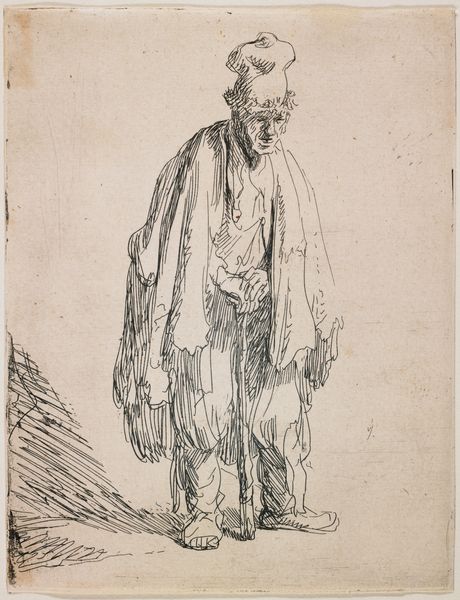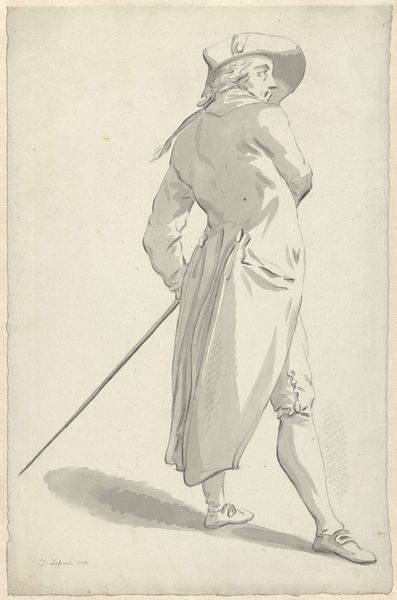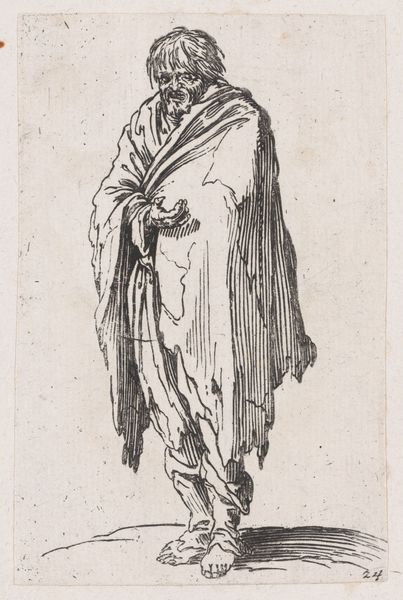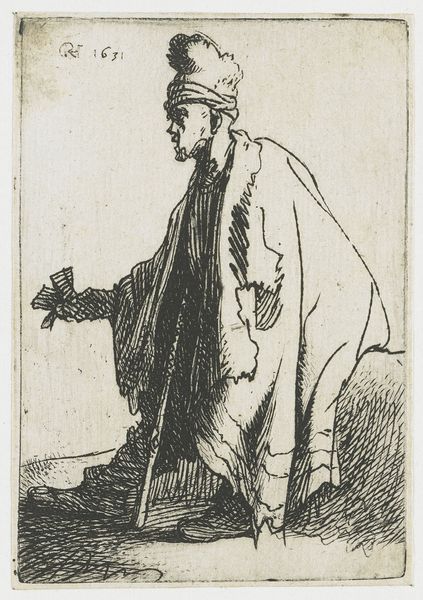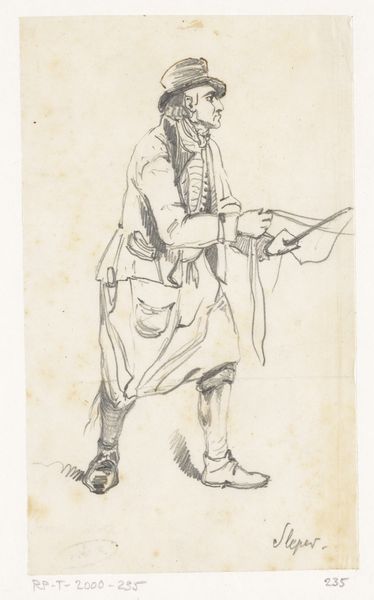
Reverse Copy of Le Mendiant au Couvet (The Beggar of Couvet), from Les Gueux suite appelée aussi Les Mendiants, Les Baroni, ou Les Barons (The Beggars, also called the Barons) 1625 - 1700
0:00
0:00
drawing, print, etching
#
portrait
#
drawing
#
baroque
# print
#
etching
#
figuration
#
line
Dimensions: Sheet: 5 3/8 x 3 3/8 in. (13.6 x 8.6 cm) trimmed and backed
Copyright: Public Domain
Curator: Take a look at this print, an etching titled "Reverse Copy of Le Mendiant au Couvet," part of a suite known as "Les Gueux" or "The Beggars," created sometime between 1625 and 1700 by an anonymous artist. Editor: Wow, there's an almost painful dignity about this beggar. He's worn and tattered, but his stance has a quiet defiance, wouldn’t you say? It’s interesting how a few lines can communicate so much about resilience. Curator: Absolutely. The beggar motif was a fairly common trope in art during this period, representing not just poverty but also the broader themes of human suffering and societal outcasts. Think about it –the lines etched here carry echoes of religious iconography, narratives of saints in hardship. Editor: Hmm, saints as societal outcasts… I like that angle! What is that he's carrying? Curator: A mendicant's bucket of sorts, I suppose? More broadly, in early modern prints such as these, the accoutrements carried by such figures always suggest the burden they carry through life. And do note the line quality: thin lines defining the distant background, bolder strokes giving shape to his figure. Editor: The deep shadows also give it drama, that Baroque-era love for contrast. You know, I see my grandpa in this figure... Not literally, of course! But the stoicism, that facing-life-squarely gaze—it's universal, transcending centuries. It's so simple, just lines on paper, but he *lives*. Curator: Indeed. Prints like these circulated widely, which meant the imagery of beggars, rendered with dignity or sometimes mockery, seeped into the public consciousness, helping to shape how people perceived the less fortunate and maybe even think about empathy. Editor: Makes you wonder if art actually can change the world… Curator: Maybe not single-handedly, but it shapes consciousness, right? Editor: Right. This unassuming beggar makes me think about who society turns a blind eye to, even now. Art can make us *look*.
Comments
No comments
Be the first to comment and join the conversation on the ultimate creative platform.
